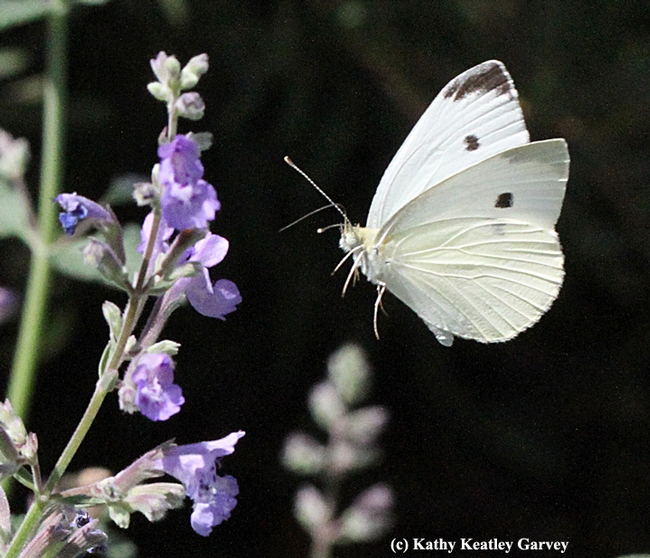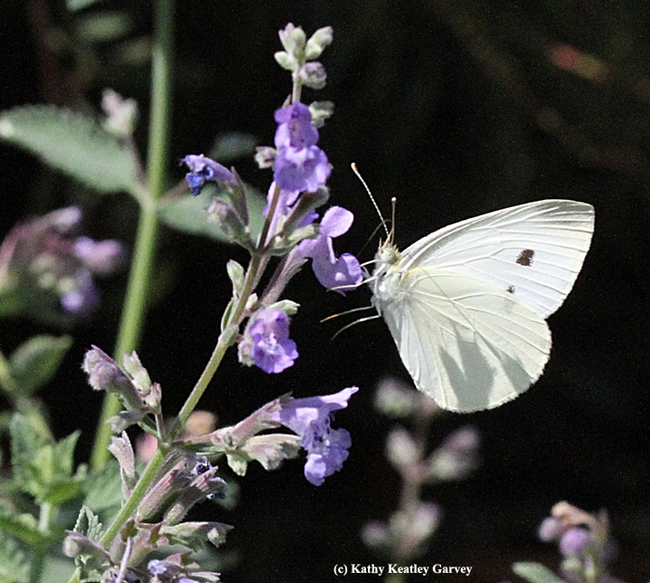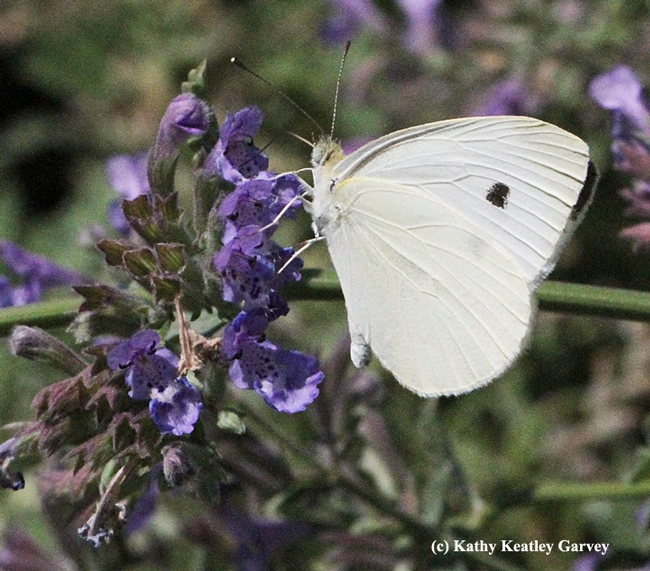- Author: Kathy Keatley Garvey
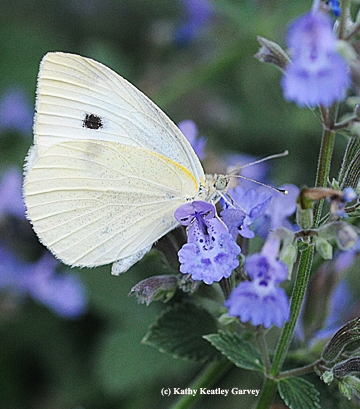
Butterflies draw smiles instead of scowls, pleasure instead of pain, glee instead of grief.
So, here's Part 1 of the good news. You still have a chance to win the Beer-for-a-Butterfly contest. No one has come forth in the three-county area of Sacramento, Yolo and Solano to deliver the first cabbage white butterfly of the new year to Art Shapiro, distinguished professor of evolution and ecology at the University of California, Davis. If you collect the first one of 2015 and you're the verified winner, you'll receive a pitcher of beer or its equivalent.
Shapiro, who usually wins his own Beer-for-a-Butterfly contest, hasn't found one either. Every day has amounted to a "No Fly Day" and a "No Beer Day."
Reports are surfacing that the cabbage whites (Pieris rapae) are flying in Santa Rosa, but unfortunately (or fortunately, depending on your perspective), Santa Rosa is in Sonoma County, not in Sacramento, Yolo or Solano counties.
Shapiro has sponsored the annual contest since 1972. It's all part of his four-decade study of climate and butterfly seasonality. “It is typically one of the first butterflies to emerge in late winter. Since 1972, the first flight has varied from Jan. 1 to Feb. 22, averaging about Jan. 20." Shapiro says his long-term studies of butterfly life cycles and climate "are especially important to help us understand biological responses to climate change. The cabbage white is now emerging a week or so earlier on average than it did 30 years ago here."
Shapiro, who is in the field more than 200 days a year, knows where and when to look. In fact, he's been defeated only three times since 1972, and all by his graduate students. Adam Porter defeated him in 1983; and Sherri Graves and Rick VanBuskirk each won in the late 1990s.
In 2014, Shapiro netted the winning butterfly at 12:20 p.m. Tuesday, Jan. 14 in West Sacramento, Yolo County. It ranked as "the fifth or sixth earliest since 1972.
The contest rules include:
- It must be an adult (no caterpillars or pupae) and be captured outdoors.
- It must be brought in alive to the department office, 2320 Storer Hall, UC Davis, during work hours, 8 a.m. to 5 p.m., Monday through Friday, with the full data (exact time, date and location of the capture) and your name, address, phone number and/or e-mail. The receptionist will certify that it is alive and refrigerate it. (If you collect it on a weekend or holiday, keep it in a refrigerator; do not freeze. A few days in the fridge will not harm it.)
- Shapiro is the sole judge.
Part 2 of the good news about butterflies: a mid-winter gathering of Northern California Lepidopterists and the Bohart Museum of Entomology will take place at an open house from 10 a.m. to 4 p.m., Saturday, Jan. 31 in the Bohart Museum, located in Room 1124 of the Academic Surge Building, Crocker Lane, UC Davis campus. Hosts are Bohart senior museum scientist-entomologist Steve Heydon and entomologists John De Benedictis and Jeff Smith.
Lepidopterists are researchers or hobbyists who specialize in the study of butterflies and moths in the order Lepitopdera.
All interested persons are encouraged to bring specimens, photos, PowerPoint presentations or slides from collecting trips and tales of collecting triumphs to share with others. Butterfly t-shirts and other entomological merchandise are available from the gift shop.
The museum, directed by Lynn Kimsey, professor of entomology at UC Davis, houses a global collection of nearly eight million specimens, and is also the home of the seventh largest insect collection in North America, and the California Insect Survey, a storehouse of the insect biodiversity. It was founded by noted entomologist Richard M. Bohart (1913-2007).
For more information on the mid-winter gathering of lepitopterists, contact Steve Heydon at (530) 752-0493 or slheydon@ucdavis.edu.
Meanwhile, The Great White Cabbage Butterfly Hunt is still underway. Can you find one before Art Shapiro does?
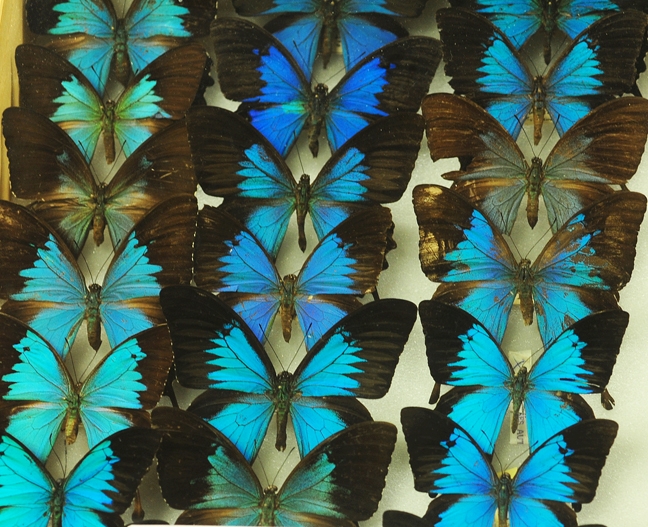
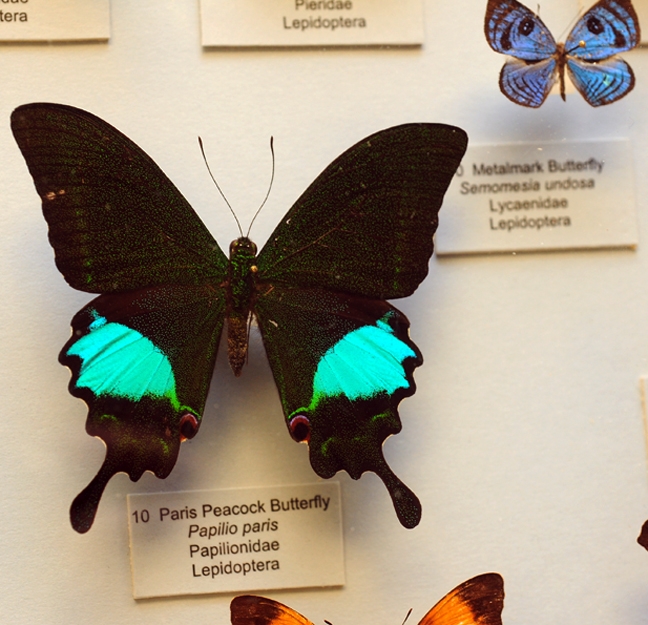
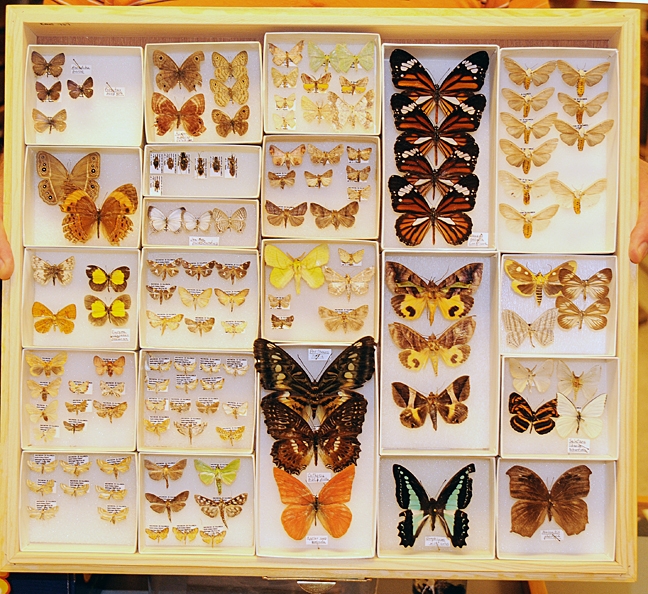
- Author: Kathy Keatley Garvey
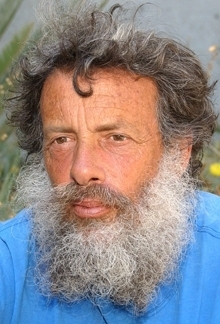
So, pull on your boots, gather your posse, grab your nets and head off to where you think a cabbage white butterfly might be. That would include vacant lots, fields and gardens where its host plants, weedy mustards, grow.
Butterfly expert Arthur Shapiro, distinguished professor of evolution and ecology at the University of California, Davis, has sponsored the annual contest, "Beer for a Butterfly," since 1972. If you collect the first one, and it's verified by judge Shapiro, you'll win a pitcher of beer or its equivalent.
Professor Shapiro says it's too cold out for the cabbage white to fly. "Both yesterday (Thursday, Jan. 1) and today (Friday, Jan. 2) were too cold for even the 'hibernator' Vanessas to come out," he said. "I don't expect rapae before AT LEAST the 13th. By the way, the prognosis looks quite dry through mid-January, but the 90-day outlook is quite wet. In late September, I forecast 130 percent of average rainfall for the season. I'm sticking with that."
Shapiro not only knows butterflies but he knows the weather. His opinion of what's happening with the California weather? (Heavy rains, flooding, heavy rains, flooding.)
"It's a drought. We'd need at least 150 percent, better 200 percent of average seasonal rainfall to get the reservoirs to the point where water managers could undeclared the drought," he said in an email today. "But even if we got that--say with a series of Pineapple Express storms--prudence would dictate releasing some of the inflow to make room for more. It's a crap shoot. This is California, where booms and busts are born. By the way, the snow level has been high so far, so even though the snow is Sierra cement and has a high water content, the pack is mostly above 7500', so the area is pretty small (look at a satellite photo) and no part of the Sierra is carrying more than 50 percent of its seasonal storage capacity."
The "Beer for a Buttterfly" contest is all part of Shapiro's four-decade study of climate and butterfly seasonality. “It is typically one of the first butterflies to emerge in late winter. Since 1972, the first flight has varied from Jan. 1 to Feb. 22, averaging about Jan. 20.”
Shapiro says his long-term studies of butterfly life cycles and climate "are especially important to help us understand biological responses to climate change. The cabbage white is now emerging a week or so earlier on average than it did 30 years ago here."
Shapiro, who is in the field more than 200 days a year, usually wins his own contest. He knows where and when to look. In 2014, he netted the winning butterfly at 12:20 p.m. Tuesday, Jan. 14 in West Sacramento, Yolo County. It ranked as "the fifth or sixth earliest since 1972."
The contest rules include:
- It must be an adult (no caterpillars or pupae) and be captured outdoors.
- It must be brought in alive to the department office, 2320 Storer Hall, UC Davis, during work hours, 8 a.m. to 5 p.m., Monday through Friday, with the full data (exact time, date and location of the capture) and your name, address, phone number and/or e-mail. The receptionist will certify that it is alive and refrigerate it. (If you collect it on a weekend or holiday, keep it in a refrigerator; do not freeze. A few days in the fridge will not harm it.)
- Shapiro is the sole judge.
Shapiro has been defeated only three times since 1972. And all were his graduate students. Adam Porter defeated him in 1983; and Sherri Graves and Rick VanBuskirk each won in the late 1990s.
Shapiro maintains a website on butterflies, where he records the population trends he monitors in Central California. He and biologist/writer/photographer Tim Manolis co-authored A Field Guide to Butterflies of the San Francisco Bay and Sacramento Valley Regions, published in 2007 by the University of California Press.
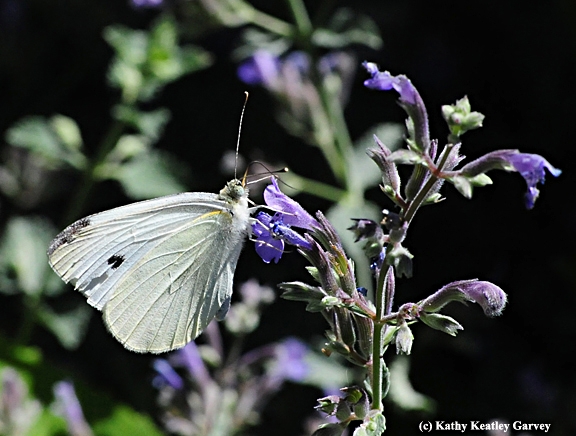
- Author: Kathy Keatley Garvey
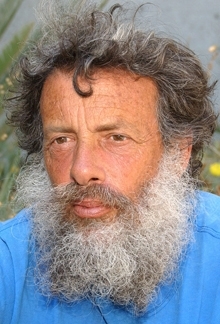
If you collect the first live cabbage white butterfly (Pieris rapae) of 2015 in Yolo, Sacramento or Solano counties and have it verified as the winner, you'll get a pitcher of beer or its equivalent.
Arthur Shapiro, distinguished professor in the UC Davis Department of Evolution and Ecology, is sponsoring his annual “Beer for a Butterfly” contest to draw attention to Pieris rapae and its first flight.
The contest, launched in 1972, is all part of Shapiro's four-decade study of climate and butterfly seasonality. “It is typically one of the first butterflies to emerge in late winter. Since 1972, the first flight has varied from Jan. 1 to Feb. 22, averaging about Jan. 20.”
"I do long-term studies of butterfly life cycles and climate," he said. "Such studies are especially important to help us understand biological responses to climate change. The cabbage white is now emerging a week or so earlier on average than it did 30 years ago here."
Shapiro, who is in the field more than 200 days a year, usually wins his own contest. In 2014, he netted the winning butterfly at 12:20 p.m. Tuesday, Jan. 14 in West Sacramento, Yolo County. It ranked as "the fifth or sixth earliest since 1972."
The professor, fellow of the American Association for the Advancement of Science, the Royal Entomological Society and the California Academy of Sciences, said the cabbage white butterfly inhabits vacant lots, fields and gardens where its host plants, weedy mustards, grow.
The white butterfly, with black dots on the upperside (which may be faint or not visible in the early season), inhabits vacant lots, fields and gardens where its host plants, weedy mustards, grow. It is typically one of the first butterflies to emerge in late winter.
The male is white. The female is often slightly buffy; the "underside of the hindwing and apex of the forewing may be distinctly yellow and normally have a gray cast,” Shapiro says. “The black dots and apical spot on the upperside tend to be faint or even to disappear really early in the season.”
The contest rules include:
- It must be an adult (no caterpillars or pupae) and be captured outdoors.
- It must be brought in alive to the department office, 2320 Storer Hall, UC Davis, during work hours, 8 a.m. to 5 p.m., Monday through Friday, with the full data (exact time, date and location of the capture) and your name, address, phone number and/or e-mail. The receptionist will certify that it is alive and refrigerate it. (If you collect it on a weekend or holiday, keep it in a refrigerator; do not freeze. A few days in the fridge will not harm it.
- Shapiro is the sole judge.
Shapiro has been defeated only three times since 1972. And all were his graduate students. Adam Porter defeated him in 1983; and Sherri Graves and Rick VanBuskirk each won in the late 1990s.
Shapiro maintains a website on butterflies, where he records the population trends he monitors in Central California. He and biologist/writer/photographer Tim Manolis co-authored A Field Guide to Butterflies of the San Francisco Bay and Sacramento Valley Regions, published in 2007 by the University of California Press.
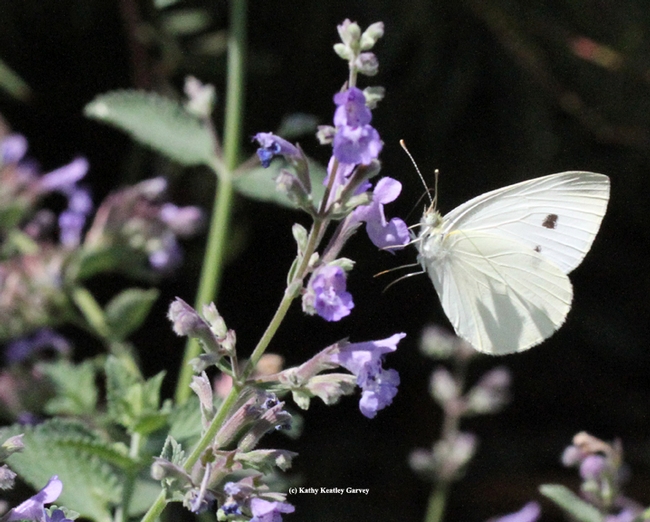
- Author: Kathy Keatley Garvey
If you see a white cabbage butterfly fluttering by you, net it.
The Pieris Project wants it.
Entomology Today, a publication of the Entomological Society of America, today covered a story about how graduate students (including Sean Ryan of the University of Notre Dame, Indiana, and Anne Espeset, University of Nevada, Reno), are seeking a "global community of citizen scientists" to collect the white cabbage butterfly, Pieris rapae, for their Pieris Project, launched last summer to study invasion biology and species responses to environmental change.
They've already received more than 600 species from "at least half of the United States," and eight other countries, Entomology Today reports. The butterfly, native to Europe, has spread throughout the world in the last 200 years and is thought to be one of the most widespread and abundant butterflies of them all. It is found on every continent except Antarctica. (Check out the most up-to-date collection map.)
The graduate students want to reconstruct the invasion history and "explore how environmental variation has been shaping the genome and phenotype of this butterfly," according to the article.
Anne Espeset is studying for her doctorate with major professor Matt Forister, whose major professor was Arthur Shapiro, distinguished professor of evolution and ecology at UC Davis. Forister received his doctorate in ecology from UC Davis in 2004.
Here are some of the specifics of the graduate student project:
1) Send them a couple of butterflies from your backyard. Include the date and latitude/longitude coordinates on the envelope. You can find more details at http://www.pierisproject.org. Even though fall is here, depending on where you live, you may be able to catch a few before winter arrives, they point out.
2) Help spread the word by either sharing the project with people you think might be interested in participating or by letting them know of organizations, schools, or any community that might be interested. Email them at pierisproject@ gmail.com.
3) Consider donating to their crowdfunding campaign. They say they have only a few days left to reach their goal, and it's all or nothing, "so we need all the help we can get! One incentive for donating is a 'Backyard Genomics Kit' — a great gift for a budding entomologist — and we also have awesome photographs by the amazing bugographer Alex Wild!" (Wild, a noted insect photographer, received his doctorate in entomology from UC Davis.)
As an aside, the cabbage white butterfly gains notoriety every year in the three-county area of Sacramento, Yolo and Solano, California. Butterfly expert Arthur Shapiro sponsors an annual contest offering a pitcher of beer for the first butterfly of the year collected in one of the three counties.
The contest is all part of Shapiro's 43-year study of climate and butterfly seasonality. He monitors the many species of Central California butterflies and posts the information on his website, Art's Butterfly World.
Shapiro says the cabbage white "is typically one of the first butterflies to emerge in late winter." Since 1972--the year he launched the "beer-for-for-a-butterfly" contest--the first flight has varied from Jan. 1 to Feb. 22, averaging about Jan. 20. And he usually wins his own contest because he knows where to find them. (See Bug Squad for results of this year's contest.)
Meanwhile, let's all catch some cabbage whites for the Pieris Project.
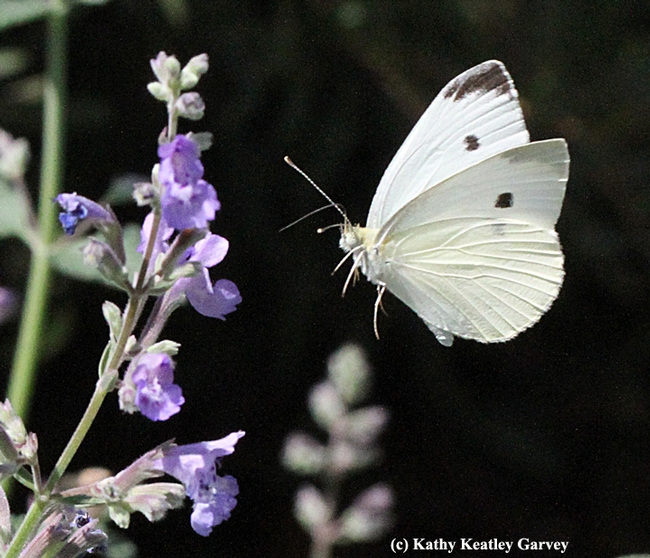
- Author: Kathy Keatley Garvey
There's something about the cabbage white butterfly (Pieris rapae) that makes folks foam at the mouth.
That's because butterfly expert Arthur Shapiro, distinguished professor of evolution and ecology at the University of California, Davis, offers a pitcher of beer for the first butterfly of the year that's brought into the department from the three-county area of Sacramento, Yolo and Sacramento.
The contest is all part of Shapiro's 43-year study of climate and butterfly seasonality. He monitors the many species of Central California butterflies and posts the information on his website, Art's Butterfly World.
The cabbage white "is typically one of the first butterflies to emerge in late winter," he says. Since 1972--the year he launched the "beer-for-for-a-butterfly" contest--the first flight has varied from Jan. 1 to Feb. 22, averaging about Jan. 20.
The good professor almost always wins his own beer-for-a-butterfly contest because he knows where to look.
This year Shapiro netted his prize winner at 12:30 p.m. Tuesday, Jan. 14 in West Sacramento, Yolo County. He collected the male on the south slope of the railroad tracks where “I've caught at least half of the first-flight cabbage whites.” The temperature hovered at 62 degrees, but soon rose to 70 degrees.
He caught it in mid-air with a self-described "ballet leap."
Contest over. All done. However, for months afterwards, would-be contestants, aka beer lovers, find a cabbage white and ask "Did I win?" Well, no...
Last weekend I followed a stunningly beautiful cabbage white in our bee garden as it nectared catmint. Usually these butterflies move so fast there's no chance of capturing them in mid-flight, but this one seemed to cooperate.
Pieris rapae! Pieris rapae! Pieris rapae! I almost executed a ballet leap. Hey, Art, did I win?
(Editor's Note: Read about the cabbageworm larvae on the UC Statewide Integrated Pest Management site.)
